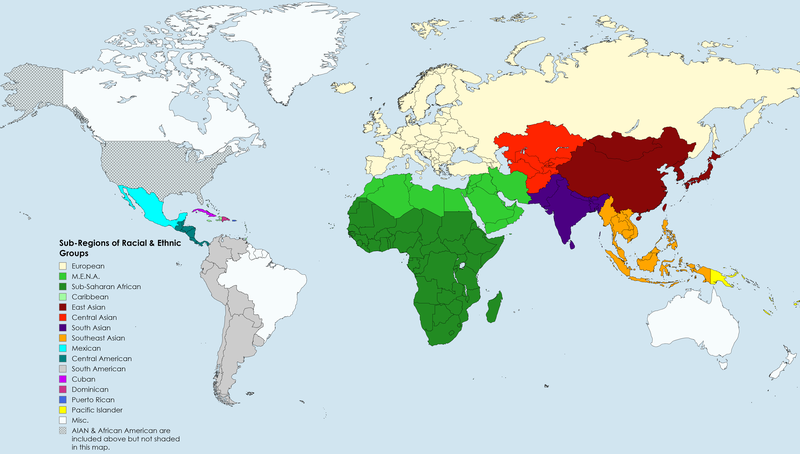The highest concentrations of those with American Indian and Alaska Native (AIAN) ancestry are in the American West. Oklahoma is home to more than 332,000 according to the most recent census. Alaska, Arizona, and New Mexico also have large AIAN populations. The chart below shows the number of residents within each regional group.
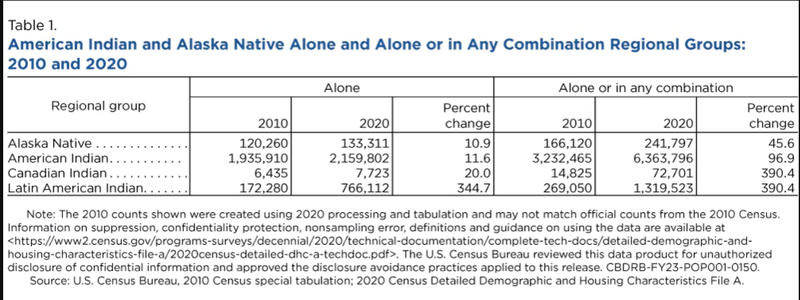
This chart and all others used on this post are sourced from the U.S. Census Bureau.
Four Corners Region
The largest American Indian Tribe is the Navajo Nation located at the Four Corners regions where Arizona, Colorado, New Mexico, and Utah meet. Arizona is also home to the Fort Apache, Gila River, San Carlos and Hopi reservations.
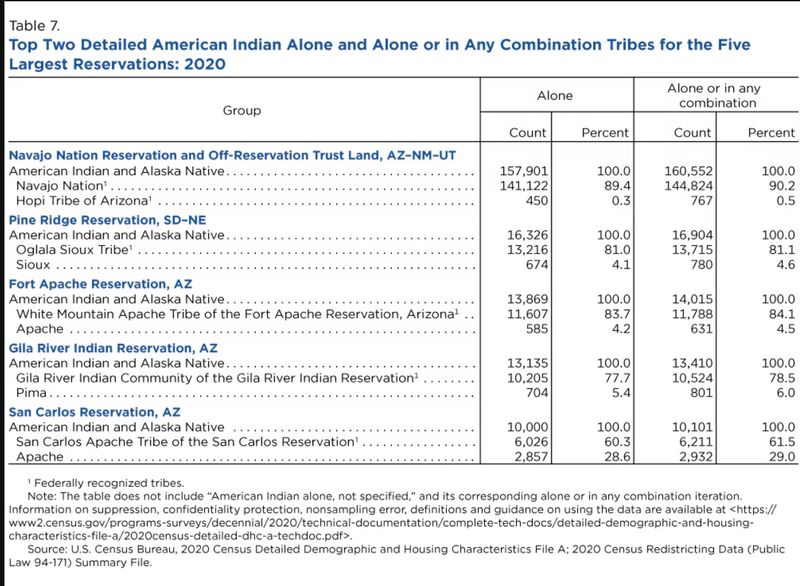
The Navajo Reservation stretches into Southern Utah and Northwestern New Mexico. The reservations have been outlined in red in the map above to help visualize the borders and accentuate the distribution patterns. Shifting into New Mexico, the Navajo Nation has a large population in the NW portion of the state but the State is also home to more than a dozen different Pueblo Tribes across many reservations and tribal lands.
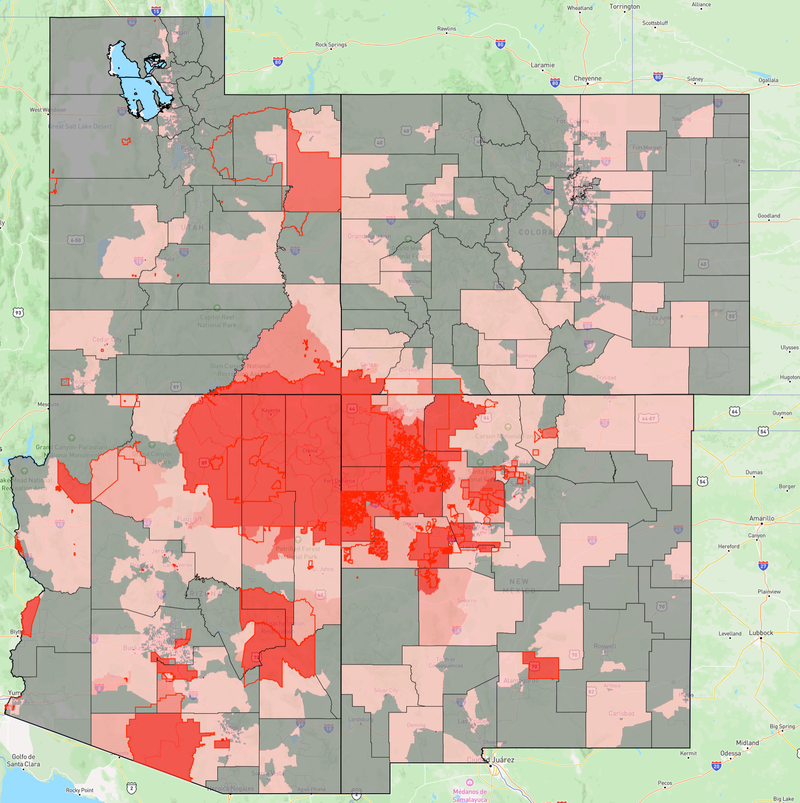
The Four Corners are also home to large populations of Mexican and Spaniard/Spanish populations. Mexican is the second largest ancestry group throughout much of the Four Corners region. The New Mexico and Southern Colorado portion of the Four Corners, especially around Sante Fe, is one of the only areas of the country with high concentrations of Spaniard ancestries. These Mexican and Spaniard ancestry concentrations have ancestral roots stretching all the way back to the colonial days of New Spain. The image below shows the concentrations of Spaniards in gray.
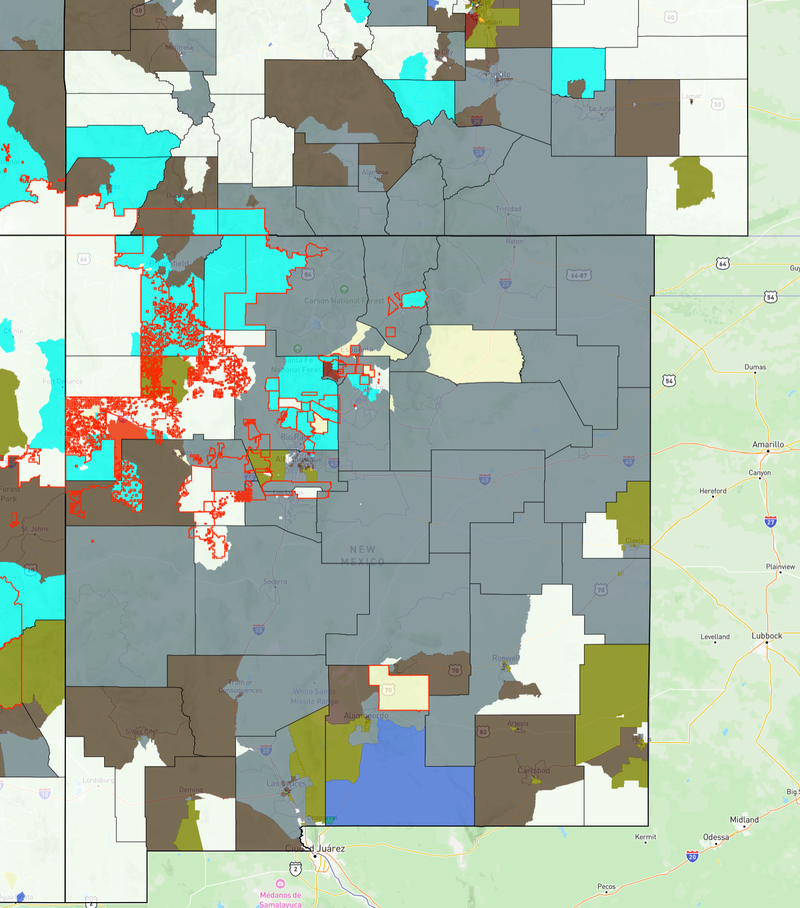
Oklahoma
The Spaniards in New Mexico aren't the only ancestries with major historical roots, Oklahoma is home to the largest number of people claiming Cherokee, Choctaw, and Chickasaw ancestries. Oklahoma's current Congressional Delegation even has members from each of these nations; with Senator Markwayne Mullin (a member of the Cherokee Nation), Rep. Josh Brecheen from OK-02 (a member of the Choctaw Nation), and Rep. Tom Cole from OK-04 (a member of the Chickasaw Nation). The image below shows that the Native ancestries are concentrated in the Eastern portion of the state. This is most prevalent in and around Tahlequah, the former Capital of the Cherokee Nation. Despite this, there is only one functional reservation located west of Tulsa, the Osage Reservation. The rest of the areas are classified as Oklahoma Tribal Statistical Areas (OTSA). The distinction is mostly that native and non-native people may live in the OTSA's.
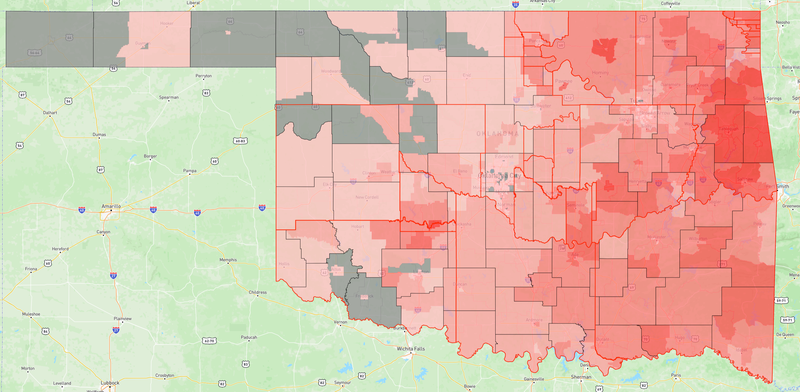
Alaska
Similar to Oklahoma, Alaska has a single reservation, Metlakatla, located on Annette Island in the Southeast corner of the state. Alaska has a unique system called Alaska Native Corporations instead of more traditional reservations, here you can read more about that system. Alaskan Natives dominate the areas outside of Anchorage, Mat-Su, Juneau, and Fairbanks. The Chart below lists some of the larger Villages and some population statistics.
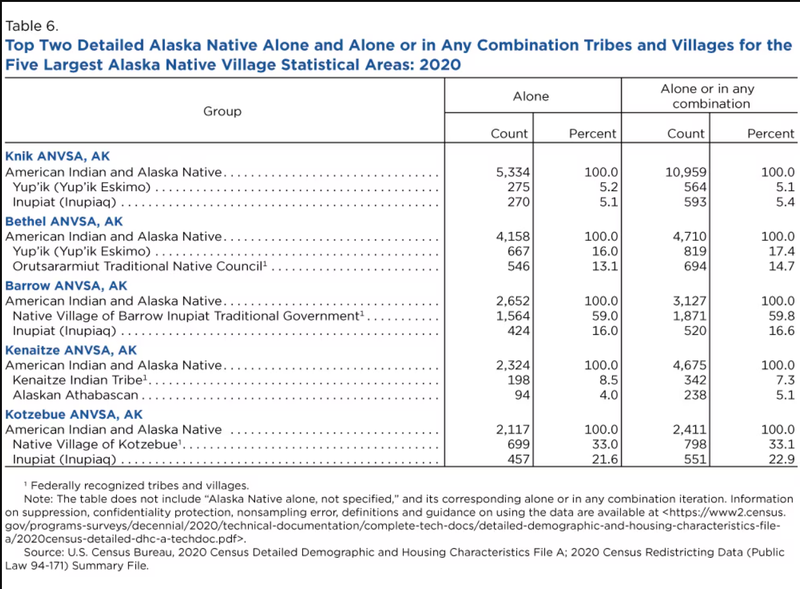
Continue to explore the interesting trends seen throughout the state looking at the 2nd group or Group Percentages to go beyond the surface level 1st largest groups. You can also read more about the different reservations and compare Alaska Natives, American Indians, Canadian Indians and Latin American Indians in this detailed look provided by the Census Bureau.
The image below depicts the countries classified within each regional group per the Census Bureau. There are two groups, Alaskan Native/American Indian Group and the African American, that are not shown on the map, despite their classification as "regional groups" in the interactive map.
